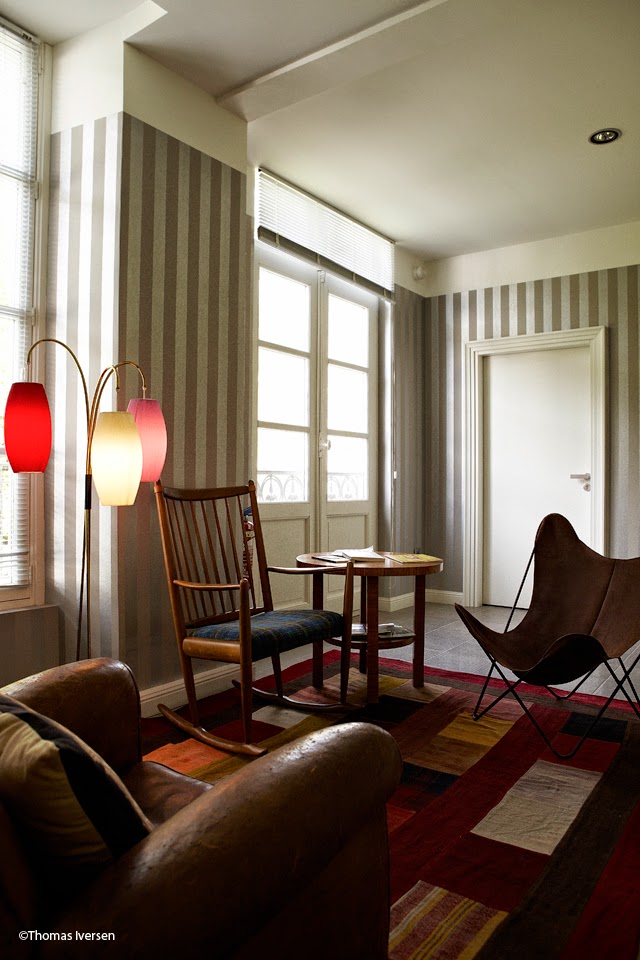(From left: Zalto White Wine / Riedel Veritas Champagne / Spiegelau "Adina water Goblet)
A Danish glass aficionado (thank God there are more than me) recently brought to my
attention that the new Champagne glass from Riedel (the Veritas series – middle
on the image) was worth checking out. It however slipped my mind, before I
attended a tasting where this glass was praised once again. Hmmmmm……Okay to
hell with it – let’s see what the fuss is all about.
So a week
ago, when tasting Chartogne-Taillet 2002 “Fiacre” I took it for a spin vs Zalto
White Wine, which I am using more and more as my reference Champagne glass.
The Riedel
Veritas Champagne glass overall has a good feel about it. It’s cool, classic
design and on sight seems to be a good companion if you want to bring out the
vinous side of Champagne – which I do. Although it’s machine made, it’s has a
fairly low weight and a really thin stem. However, when arriving from Planet
Zalto, everything seems bulky and heavy in comparison. This will always be an
advantage for Zalto a no other glass brand has the same magic feel about it
IMHO.
Fiacre is a
lovely Champagne, which always makes me in a good mood. In Riedel “Fiacre”
performed classic and really good. If you knew of no other glass, this would be
a great Champagne glass.
In Zalto
however (left), it was another story. It’s been a while since I have conducted
glass tests, but here I overwhelmed by the difference. Zalto was a millions
time better. It’s simply a difference in frehness and focus, which makes all
Champagnes in Zalto seems so frisky. Returning to Riedel; “Fiacre” was suddenly
much heavier and sweeter and I am confident it has to do with the fact you are
tasting lead (Riedel) vs lead-free (Zalto).
Another test: 28. december 2014.
2010 Doamine Belluard “Ayse Mont-Blanc Brut
Zero”
(So not Champagne, but a sparkling wine from
Savoie made from 100% Grignet). Seriously one of the best non-Champagnes I have
ever tasted. A real bargain)
More or less the same result, though not as
clear as Zalto’s first win. This time Adina was also in play. In Riedel it was
more about simple fruit, which of course is okay. But the wine was lacking
secondary nuances as the fruity impression was overwhelming. Yet in Adina, it
has a more toned down/subtle appeal, which provided more elegance. In Zalto you
had the edgy feel again, where the wine felt really naked, yet also far more
mysterious and interesting with the mineral spine really kicking in. I am not
sure everyone would go for the Zalto as winner here, as it shows the wine far
more raw and unpolished. But I like this raw and racy expression.
Test –
from 16th of January 2015.
2008 “L’Apôtre” from David Léclapart
This time
Adina vs Zalto. Hard to say, who actually won here, because we were dealing
with a very shy Champagne. But the
pattern was the same. In this case, the Adina glass seemed to have an advantage
by opening up “L’Apôtre” a bit
more. However it was just an illusion, caused by the wider opening of the glass
and the feel of some fruit coming forward. The Champagne was indeed sealed like
an oyster. I still favoured Zalto, despite it was a strange test really, simple
because the firmness and feel of the energy in Zalto was better, which is always
the case for me. On day two – I forgot about testing and just enjoyed the
second half of the bottle in Zalto.
New test:
30th of Janury 2015
2011
Jérôme Prévost “Les
Béguines “
Zalto vs
Riedel. It really came close this time. Riedel really captured the essence of
“Les Béguines “. Refined and fresh in Riedel – no fuzz at all, just like Zalto.
Where it goes wrong for Riedel, is when it warms up in temperature. First of
all it accelerates faster in Riedel, whereas as Zalto keeps the wine cooler. Or
it feels like that and of course Riedel in general has a wider bowl. But one
difference seems once again to be the unleaded vs a lead glass. In Riedel the
wine becomes clumsier when raised in temperature and the feel of lead. In Zalto
there is a constant firmness and nothing is lost or sticks out, when it warms
up – only a natural temperature evolvement.
I might do
one of two testing’s more – but I think there a pattern is starting to form.

















































